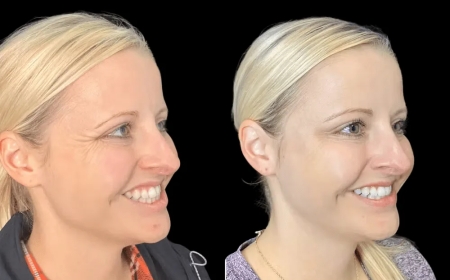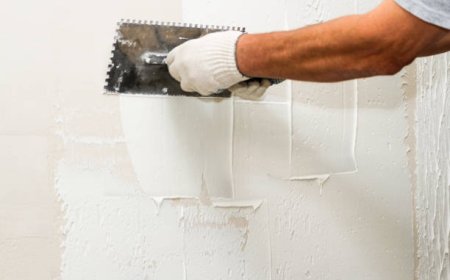Understanding the SMAS Facelift: A Comprehensive Guide to Advanced Facial Rejuvenation

What Is a SMAS Facelift?
The SMAS facelift, short for Superficial Musculoaponeurotic System facelift, represents a groundbreaking evolution in cosmetic surgery. Unlike traditional facelifts, which primarily address the outer skin layer, the SMAS facelift targets the deeper structural elements of the face. These include the muscles and connective tissues that form the framework supporting your skin.
As we age, the SMAS layer begins to sag along with the skin, resulting in visible signs of aging such as jowls, deep nasolabial folds, and sagging cheeks. The SMAS facelift seeks to correct these issues by lifting and tightening this deeper layer. This technique yields a more natural, youthful appearance that lasts significantly longer than traditional facelift procedures.
The hallmark of this approach is its ability to reposition facial volume in a way that avoids the overly tight or windblown look associated with older methods. Surgeons specializing in facial aesthetics regard the SMAS facelift as the gold standard for comprehensive, long-lasting facial rejuvenation.
How Does the SMAS Facelift Differ from Traditional Facelifts?
Traditional facelift techniques usually focus on tightening the skin alone. While this can temporarily reduce the appearance of wrinkles and sagging, it does not address the underlying muscular structure of the face. As a result, traditional facelifts may offer limited results that diminish over time.
The SMAS facelift, in contrast, provides a more in-depth correction by targeting the musculoaponeurotic systema network of muscles and connective tissues beneath the skin. By lifting this layer along with the skin, the procedure achieves a more harmonious and durable outcome.
Another major advantage of the SMAS technique is its versatility. Surgeons can tailor the lift to the specific needs of each patient, whether the concern is sagging cheeks, a poorly defined jawline, or drooping skin around the neck. Moreover, because the SMAS layer is thicker and more resilient than skin alone, the results are more stable and natural-looking.
To read more click here: https://www.drjefflisiecki.com/face/facelift/smas-facelift/
Ideal Candidates for the SMAS Facelift
The SMAS facelift is best suited for individuals aged 40 to 70 who are experiencing moderate to advanced facial aging. Common signs include deep wrinkles, sagging cheeks, jowls, and loss of definition along the jawline. Candidates should be in good general health, non-smokers, and possess realistic expectations about the outcomes.
This technique is also a strong choice for patients who have previously undergone a traditional facelift but desire more comprehensive and longer-lasting results. Men and women alike can benefit from the SMAS facelift, and its often chosen by those who want to avoid the telltale signs of having had work done.
During your consultation, a board-certified plastic surgeon will assess your skins elasticity, facial anatomy, and overall goals. This assessment helps determine if the SMAS facelift is the right procedure for you. In some cases, your surgeon might recommend complementary procedures like blepharoplasty (eyelid surgery), a brow lift, or dermal fillers to enhance the final result.
The Procedure: What to Expect During Surgery
A SMAS facelift typically takes between three to five hours to complete and is usually performed under general anesthesia or IV sedation. The procedure begins with strategically placed incisions, usually along the hairline and around the ears, where scars are easily concealed.
Through these incisions, the surgeon carefully lifts and repositions the SMAS layer to its more youthful position. The skin is then re-draped over the newly contoured framework and any excess is removed. The result is a natural-looking lift that addresses not just the symptoms but the root causes of facial aging.
Some surgeons may combine the SMAS technique with liposuction to remove excess fat, particularly in the neck and jawline areas. Others may incorporate fat grafting to restore lost volume in hollow areas like the cheeks or temples. Every surgical plan is customized to meet the unique needs of the patient.
Recovery and Aftercare
After surgery, patients can expect some degree of swelling, bruising, and discomfort. These are normal and typically subside within one to two weeks. Most patients are able to return to light activities within 10-14 days, although strenuous exercise should be avoided for at least four weeks.
To ensure a smooth recovery, its crucial to follow your surgeons post-operative care instructions. These may include wearing compression garments, attending follow-up appointments, and taking prescribed medications. Sleeping with your head elevated and avoiding certain movements will also help minimize swelling.
Visible improvements are often noticeable within the first few weeks, but full results can take several months to emerge as residual swelling fades and the tissues settle into their new positions.
Longevity and Results of a SMAS Facelift
One of the most appealing benefits of the SMAS facelift is the longevity of the results. On average, patients can expect their rejuvenated appearance to last anywhere from 10 to 15 years. This extended duration makes the procedure a worthwhile investment for those seeking durable, natural results.
Unlike non-surgical treatments that require frequent maintenance, a SMAS facelift offers significant improvement in a single procedure. Patients often report enhanced self-esteem, improved social confidence, and a more youthful appearance that matches how they feel on the inside.
Moreover, because the SMAS facelift addresses deeper tissues, the aging process tends to resume more gradually than with superficial treatments. Future touch-ups, if needed, are often less extensive and easier to perform.
Potential Risks and How to Minimize Them
As with any surgical procedure, the SMAS facelift carries some risks. These may include infection, hematoma, nerve injury, or unfavorable scarring. However, when performed by a skilled and experienced surgeon, complications are relatively rare.
Choosing a board-certified plastic surgeon with expertise in facial anatomy significantly reduces these risks. Pre-operative evaluations, proper surgical technique, and diligent aftercare all contribute to a safe and successful outcome.
Patients can also take steps to optimize their results by maintaining a healthy lifestyle, avoiding smoking, managing stress, and protecting their skin from sun damage.
Complementary Procedures for Comprehensive Rejuvenation
Many patients choose to combine their SMAS facelift with other facial procedures for a more complete transformation. These may include:
-
Blepharoplasty: Corrects sagging eyelids and under-eye bags.
-
Brow Lift: Elevates drooping brows and smooths forehead wrinkles.
-
Neck Lift: Targets loose skin and banding in the neck area.
-
Fat Grafting: Adds volume to hollow areas like cheeks or temples.
-
Laser Resurfacing or Microneedling: Improves skin texture and tone.
Combining procedures can enhance overall facial harmony and reduce the need for future surgeries. Your surgeon will help you determine which combination of treatments will deliver the best results for your goals and anatomy.
Emotional and Psychological Benefits
The benefits of a SMAS facelift extend beyond physical appearance. Many patients report a significant boost in self-confidence and emotional well-being. Looking younger and more refreshed often translates into greater social engagement and professional confidence.
For individuals who have been self-conscious about aging signs, a facelift can provide a renewed sense of vitality. This psychological uplift can be just as transformative as the physical changes, enhancing ones quality of life in multiple dimensions.
Conclusion: Is the SMAS Facelift Right for You?
For those seeking substantial facial rejuvenation with natural, long-lasting results, the SMAS facelift is an exceptional choice. By addressing not only the surface but the deeper muscular structure of the face, this technique offers dramatic improvement without compromising natural beauty.
If youre considering a facelift, its essential to consult with a board-certified plastic surgeon who specializes in the SMAS method. Their expertise will ensure that you receive personalized care tailored to your facial anatomy and aesthetic goals.
With the right approach and proper aftercare, a SMAS facelift can help you look as vibrant as you feelrestoring youthful contours, boosting confidence, and offering results that truly stand the test of time.





































